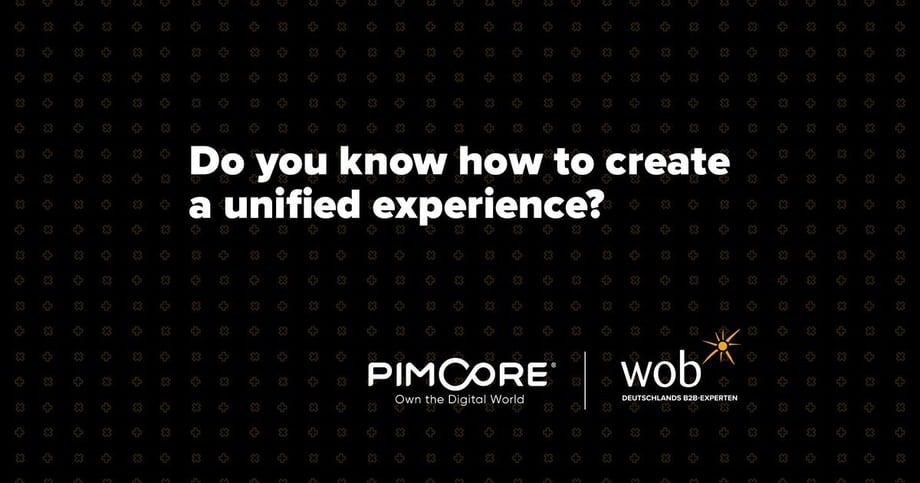
Over the last few months, our partner wob has presented system-oriented perspectives on contemporary B2B marketing in numerous articles. Now, we would like to elaborate on how a so-called unified platform can unite your various marketing technologies and provide you already today with the basis for mastering the unknown business challenges of tomorrow.
Speed and complexity make stand-alone solutions inefficient
Did you also quickly set up a platform for virtual events because of the pandemic? Or one that enables better campaigns and lead generation for your retailers? Or maybe a central product database that distributes the right content to your website or to a new shop?
Then you already know that deceleration and marketing don't go well together – neither for now nor for tomorrow. Since many of the technical approaches that tackle all the different B2B challenges share similar foundations, strategically managed marketing departments waste no time and have long since stopped to work on stand-alone solutions. Thus, unified platforms are considered the next big thing in MarTech.
Flexibility and compatibility is what makes unified platforms so efficient
A unified platform offers technical infrastructures that can be operated and combined in a flexible manner. These technical infrastructures enable quick integration of important functionalities into a new marketing platform, so users find everything they need across multiple channels or touchpoints.
In general, wob AG says the following marketing questions should be answered before implementing a unified platform:
- Where will the product data reside and how will it be used in marketing?
- How will images, videos and other assets be managed for various marketing output channels (including even the printed fact sheet)?
- Which website content is also needed in other contexts, for example for campaigns?
- Where are the most exclusive and immersive offers set together and how are comprehensive user profiles created?
- What kind of user data has to be available in order to supply users with everything they need until they are qualified for a sale?
From the unified platform to a unified experience
However, it’s not only the IT and marketing departments that benefit from the advantages of the unified platform approach. Thanks to a unified platform, users enjoy a so-called unified experience, as they are presented with the right information adapted to their individual situation on different channels or touchpoints – in terms of the right extent, the right format, and, above all, in line with their interests, habits and preferences.
Unprepared, but ready
If you want to offer an inspiring experience to your target groups across several marketing channels disciplines in the future, a robust unified platform is an absolute necessity. After all, no one knows what will be subsequently expected of marketing departments and how quickly existing data will have to be linked with new technologies in years to come. However, in order to be ready for all eventualities in regard to any given project, it makes sense to find answers to the following questions:
- Can a path be taken here that provides flexibility for the future?
- Is there a chance to develop a holistic setup at this point, from which upcoming projects can benefit?
- Which other stakeholders might have advantages from a robust unified platform and could collaborate with me on establishing this setup?
- Is the chosen system open enough to interact with other systems?
- And, of course, most importantly: Do I make sure that all my target groups are excited across all touchpoints?
A short digression: “headless“does not mean without thought when it comes to unified platforms.
By the way, the unified platform also ensures that a lot of content and data is managed in an application-agnostic way. This means that content as well as data are stored in objects of the system and are distributed as required to the various channels with their respective templates and components. The system (backend) is decoupled from the output (frontend), so to speak.
This headless approach has grown in popularity for quite some time, because the central administration of content (see PIM, CDP, MAM) saves valuable maintenance time in several channels for editors and users can look forward to high-performance systems and consistent information. Meanwhile, many popular systems offer headless approaches – including formerly static tools such as eZ and Wordpress. wob AG's tool of choice is Pimcore, which has always shared many productive object features and can therefore be regarded as a first class pick for a unified platform.

.jpg?width=520&height=294&name=poca-crew(1).jpg)

